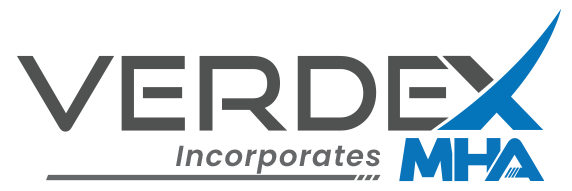Common Mistakes to Avoid When Using Material Handling Equipment
Date Posted:21 August 2024
Avoiding these common mistakes can significantly enhance the safety and efficiency of your material handling operations. By prioritising maintenance, training, safety protocols, and proper equipment use, you can create a productive and safe working enviro
Material handling equipment is the unsung hero of warehouses, manufacturing plants, and distribution centres. From forklifts to conveyor belts, these tools ensure that products are moved efficiently, safely, and swiftly. However, even the best equipment can be rendered ineffective, or worse, dangerous, if not used correctly. Here, we outline common mistakes to avoid when using material handling equipment to ensure smooth operations and maintain a safe workplace.
1. Neglecting Regular Maintenance
Mistake: Skipping scheduled maintenance checks and servicing.
Impact: Just like any machinery, material handling equipment requires regular maintenance to function optimally. Neglecting maintenance can lead to unexpected breakdowns, safety hazards, and costly repairs.
Prevention: Establish a routine maintenance schedule. Ensure that all equipment is inspected, serviced, and repaired as needed. Keep detailed records of maintenance activities to track the health of your equipment.
2. Overloading Equipment
Mistake: Exceeding the weight limits of forklifts, pallet jacks, or conveyor belts.
Impact: Overloading can cause equipment failure, leading to accidents and injuries. It also reduces the lifespan of the equipment.
Prevention: Always adhere to the manufacturer’s recommended load capacity. Train employees on the importance of following these guidelines and provide clear signage indicating maximum load limits.
3. Inadequate Training
Mistake: Allowing untrained or improperly trained personnel to operate equipment.
Impact: Lack of proper training increases the risk of accidents, equipment damage, and inefficiency in operations.
Prevention: Invest in comprehensive training programs for all employees who will be using material handling equipment. Regularly update training to include new safety protocols and equipment features. Consider certification programs for operating heavy machinery.
4. Ignoring Safety Protocols
Mistake: Not following established safety protocols and procedures.
Impact: Safety protocols are in place to protect workers and equipment. Ignoring them can lead to serious accidents and injuries.
Prevention: Reinforce the importance of safety protocols through regular training and reminders. Conduct safety drills and audits to ensure compliance. Create a culture where safety is a top priority and encourage employees to report any safety concerns.
5. Improper Loading and Unloading
Mistake: Incorrectly loading or unloading materials on equipment.
Impact: Improper loading can lead to load shifts, tipping, and damage to both the equipment and the goods being transported.
Prevention: Train employees on the correct methods of loading and unloading. Use appropriate tools like straps and braces to secure loads. Ensure that loads are evenly distributed and do not exceed the equipment’s capacity.
6. Poor Equipment Selection
Mistake: Using the wrong type of equipment for a specific task.
Impact: Using inappropriate equipment can lead to inefficiencies, increased risk of damage, and potential safety hazards.
Prevention: Assess the specific needs of each task and select the appropriate equipment. Consult with experts if unsure about the best equipment for a particular job. Regularly review equipment usage to ensure it remains suitable for your needs.
7. Lack of Communication
Mistake: Failing to communicate effectively between team members.
Impact: Poor communication can lead to misunderstandings, errors, and accidents.
Prevention: Establish clear communication channels and protocols. Use radios, signals, or other communication devices to ensure everyone is aware of ongoing operations. Foster a team environment where open communication is encouraged and valued.
8. Inadequate Workspace Organisation
Mistake: Cluttered and disorganised workspaces.
Impact: Disorganisation can lead to accidents, slow down operations, and make it difficult to locate necessary tools and equipment.
Prevention: Implement a clean and organised workspace policy. Regularly audit and reorganise the workspace to ensure it remains clutter-free. Use labelling and signage to clearly mark storage areas and pathways.
9. Ignoring Ergonomics
Mistake: Not considering ergonomic principles in the design and use of equipment.
Impact: Poor ergonomics can lead to worker fatigue, repetitive strain injuries, and decreased productivity.
Prevention: Choose equipment that supports ergonomic principles, such as adjustable handles and controls. Train employees on proper lifting techniques and encourage regular breaks to reduce strain. Regularly review and adjust workstations to maintain ergonomic standards.
10. Failing to Update Equipment
Mistake: Using outdated or obsolete equipment.
Impact: Older equipment may not meet current safety standards, leading to increased risk of accidents and inefficiencies.
Prevention: Regularly review and update your equipment inventory. Stay informed about advancements in material handling technology and consider upgrading to newer, safer, and more efficient models as needed.
Avoiding these common mistakes can significantly enhance the safety and efficiency of your material handling operations. By prioritising maintenance, training, safety protocols, and proper equipment use, you can create a productive and safe working environment.




























































































































 Trolleys & Hand Trucks
Trolleys & Hand Trucks Cage Trolleys
Cage Trolleys Cleaning Carts & Trolleys
Cleaning Carts & Trolleys Construction Trolleys
Construction Trolleys Hand Trucks & Dollies
Hand Trucks & Dollies Laundry/Linen Trolleys
Laundry/Linen Trolleys Lifting Trolleys
Lifting Trolleys Order Picking Trolleys
Order Picking Trolleys Panel Cart Trolleys
Panel Cart Trolleys Platform Trolleys
Platform Trolleys Powered Trolleys
Powered Trolleys Shelf & Tiered Trolleys
Shelf & Tiered Trolleys Stainless Steel Trolleys
Stainless Steel Trolleys Tool Trolleys
Tool Trolleys Utility & Service Carts
Utility & Service Carts Lifting & Handling Equipment
Lifting & Handling Equipment Forklift Attachments
Forklift Attachments Jib Attachments
Jib Attachments Lifting Hoists & Pallet Hooks
Lifting Hoists & Pallet Hooks Load Skates & Tow Tugs
Load Skates & Tow Tugs Manual Stackers & Lifters
Manual Stackers & Lifters Pallet Jacks
Pallet Jacks Pallet Lifters
Pallet Lifters Pallet Rotators & Dispenser
Pallet Rotators & Dispenser Powered Pallet Trucks & Electric Lifters
Powered Pallet Trucks & Electric Lifters Scissor Lift Trolleys and Tables
Scissor Lift Trolleys and Tables Conveyor Equipment
Conveyor Equipment Conveyor Frames & Stands
Conveyor Frames & Stands Roller & Skate Conveyors
Roller & Skate Conveyors Ladders & Access Equipment
Ladders & Access Equipment Container & Yard Ramps
Container & Yard Ramps Ladders & Step Stools
Ladders & Step Stools Work Platforms & Crane Cages
Work Platforms & Crane Cages Drum Handling Equipment
Drum Handling Equipment Drum Storage & Bunding
Drum Storage & Bunding Drum Trolleys & Lifters
Drum Trolleys & Lifters Forklift Drum Handling
Forklift Drum Handling Dangerous Goods Storage & Spillage
Dangerous Goods Storage & Spillage Aerosol Cans Storage Cages
Aerosol Cans Storage Cages Bunded Pallets & Storage
Bunded Pallets & Storage Corrosive Goods Storage Cabinets
Corrosive Goods Storage Cabinets DG Storage & Trolleys
DG Storage & Trolleys Flammable Liquid Cabinets
Flammable Liquid Cabinets Forklift Gas Storage Cages
Forklift Gas Storage Cages Site Storage
Site Storage Spill Kits
Spill Kits Waste Handling & Bins
Waste Handling & Bins Bin Lifters & Tippers
Bin Lifters & Tippers Plastic Waste & Wheelie Bins
Plastic Waste & Wheelie Bins Steel Waste & Tipping Bins
Steel Waste & Tipping Bins Waste Carts
Waste Carts Shelving & Storage Equipment
Shelving & Storage Equipment Heavy Duty Cabinets
Heavy Duty Cabinets Heavy Duty Shelving
Heavy Duty Shelving Mega Bins & Pallets
Mega Bins & Pallets Packing & Workbenches
Packing & Workbenches Pallet Racking Accessories
Pallet Racking Accessories Parts Trays & Stor-Pak Bins
Parts Trays & Stor-Pak Bins Pegboard & Louvre Panels
Pegboard & Louvre Panels Plastic Bins & Crates
Plastic Bins & Crates Plastic Handling Solutions Bins
Plastic Handling Solutions Bins Plastic Pallets
Plastic Pallets Stack & Nest Bins
Stack & Nest Bins Stillage & Transport Cages
Stillage & Transport Cages Workplace Equipment
Workplace Equipment Modular Workbenches
Modular Workbenches Electric Height-Adjustable Workbenches
Electric Height-Adjustable Workbenches Floor Matting
Floor Matting General Workplace Equipment
General Workplace Equipment Industrial Weighing Scales
Industrial Weighing Scales Packaging Machinery
Packaging Machinery Stationery Cupboards
Stationery Cupboards Storage and Stillage Cages
Storage and Stillage Cages Tool Trolleys
Tool Trolleys Tooling Cabinets
Tooling Cabinets Safety Barriers, PPE & Signage
Safety Barriers, PPE & Signage Barriers & Bollards
Barriers & Bollards First Aid Equipment
First Aid Equipment Gloves, Knives and PPE
Gloves, Knives and PPE Signage
Signage Cleaning & Site Supplies
Cleaning & Site Supplies Cleaning Equipment
Cleaning Equipment Cleaning Trolleys
Cleaning Trolleys Rubbish Bins
Rubbish Bins Signs & Traffic Supplies
Signs & Traffic Supplies Construction Equipment
Construction Equipment Construction Trolleys
Construction Trolleys Waste Handling
Waste Handling General Site Equipment
General Site Equipment Concrete Equipment
Concrete Equipment Site Storage
Site Storage Lifting Equipment
Lifting Equipment Verdex Specials
Verdex Specials

.PNG)









